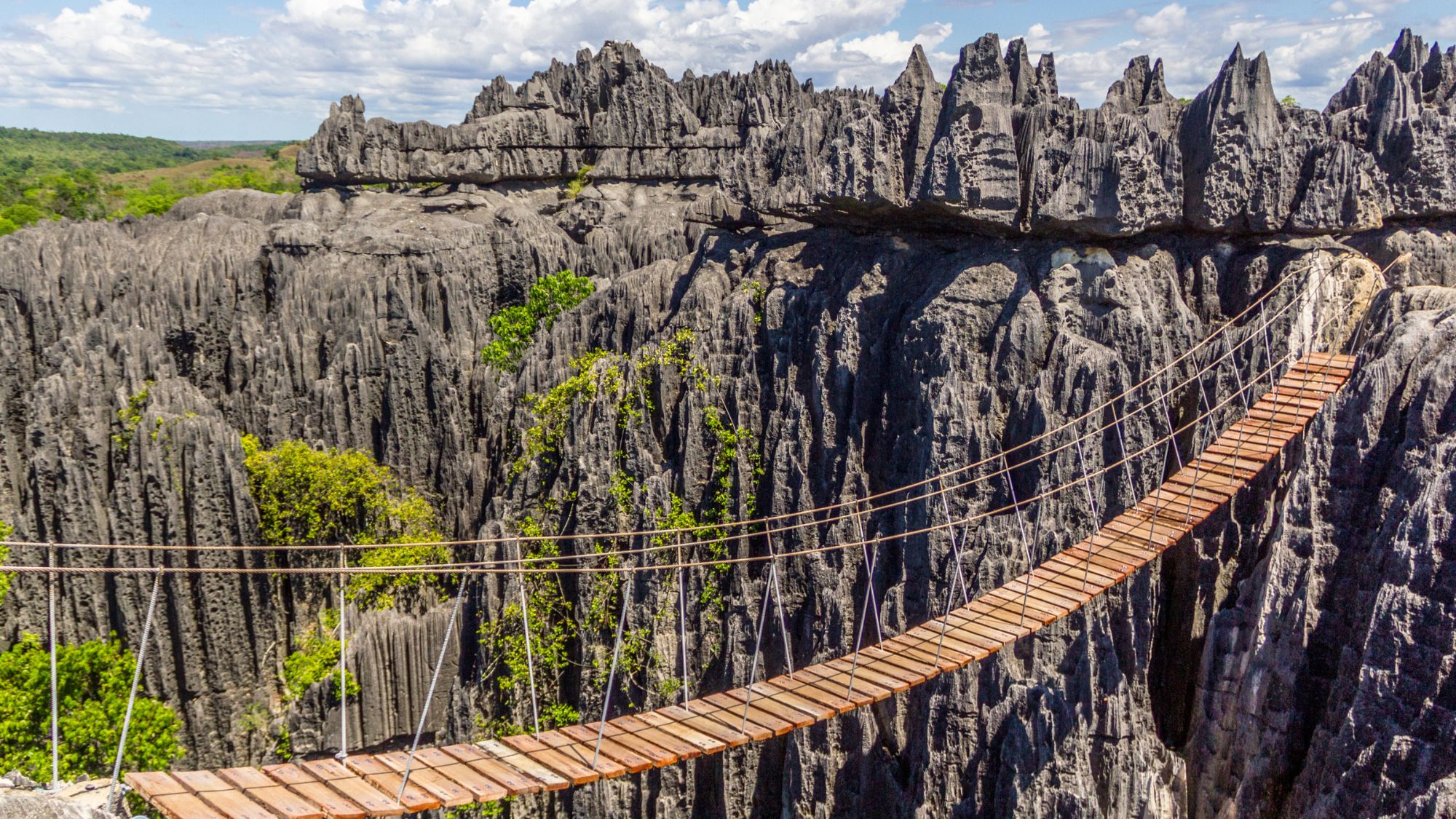The forest of rock in the heart of Madagascar
Pockets of 'pristine wilderness' are more than worth exploring

When the supercontinent of Gondwana broke up around 180 million years ago, Madagascar drifted away from mainland Africa, and its flora and fauna evolved in isolation.
Some biologists call it "the eighth continent", said Mike Carter in the Financial Times, as 90% of these plants and animals are found nowhere else, and many are highly distinctive. However, since humans arrived roughly 1,500 years ago, nearly all the forest that once covered the island has been lost to slash-and-burn agriculture.
Madagascar is one of the world's poorest countries, and since gaining independence from France in 1960, its population has grown roughly sixfold to 30 million, accelerating the destruction. Even so, pockets of "pristine" wilderness remain – and last year, new lodges opened in two of them.
The Week
Escape your echo chamber. Get the facts behind the news, plus analysis from multiple perspectives.

Sign up for The Week's Free Newsletters
From our morning news briefing to a weekly Good News Newsletter, get the best of The Week delivered directly to your inbox.
From our morning news briefing to a weekly Good News Newsletter, get the best of The Week delivered directly to your inbox.
One of these is the "surprisingly luxurious" Namoroka Tsingy Camp, on the edge of the Tsingy de Namoroka National Park. To get there, I flew from the capital, Antananarivo, to Soalala on the northwest coast, and then travelled 50km in a 4WD along a "hideously rutted" road. The 220sq km park is known for its endless ranks of pale, spiky limestone towers and ridges, a karst landscape known as tsingy (meaning "where you cannot walk barefoot"), and it also has several types of forest and a cave system believed to be the largest in Africa.
The camp's owner, Edward Tucker-Brown, told me that the area sees very few foreign visitors – and yet it is a truly "otherworldly" place. The wildlife sightings on guided walks were marvellous, from Malagasy giant chameleons up to 60cm long, to Madagascan sunset moths like "flying kaleidoscopes" and rare lemurs like "creamy teddy bears".
No less beautiful is Nosy Boraha, a 50km-long island "dense with rainforest" and fringed with "deserted" white-sand beaches. There, I stayed in a thatched cottage at the new Voaara hotel, eating wonderful food, snorkelling on the reef and resolving to come back in the summer, when 7,000 humpback whales gather offshore.
A free daily email with the biggest news stories of the day – and the best features from TheWeek.com
-
 The best homes of the year
The best homes of the yearFeature Featuring a former helicopter engine repair workshop in Washington, D.C. and high-rise living in San Francisco
-
 Critics’ choice: The year’s top 10 movies
Critics’ choice: The year’s top 10 moviesFeature ‘One Battle After Another’ and ‘It Was Just an Accident’ stand out
-
 A luxury walking tour in Western Australia
A luxury walking tour in Western AustraliaThe Week Recommends Walk through an ‘ancient forest’ and listen to the ‘gentle hushing’ of the upper canopy
-
 Joanna Trollope: novelist who had a No. 1 bestseller with The Rector’s Wife
Joanna Trollope: novelist who had a No. 1 bestseller with The Rector’s WifeIn the Spotlight Trollope found fame with intelligent novels about the dramas and dilemmas of modern women
-
 Appetites now: 2025 in food trends
Appetites now: 2025 in food trendsFeature From dining alone to matcha mania to milk’s comeback
-
 Man vs Baby: Rowan Atkinson stars in an accidental adoption comedy
Man vs Baby: Rowan Atkinson stars in an accidental adoption comedyTalking Point Sequel to Man vs Bee is ‘nauseatingly schmaltzy’
-
 Goodbye June: Kate Winslet’s directorial debut divides critics
Goodbye June: Kate Winslet’s directorial debut divides criticsTalking Point Helen Mirren stars as the terminally ill English matriarch in this sentimental festive heartwarmer
-
 A Christmas Carol (or two)
A Christmas Carol (or two)The Week Recommends These are the most delightful retellings of the Dickens classic from around the country


